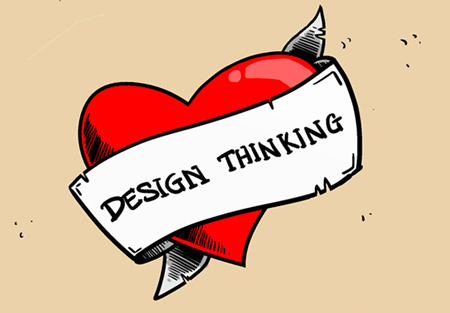Design Thinking: Don’t Call It A Comeback

Like so many other things in the blogosphere, Design Thinking is apparently dead. That is, if you agree with Bruce Nussbaum, the once eloquent champion of Design Thinking who recently declared that it was a failed experiment and that it’s time to move on. Apparently, he’s not alone. A growing number of critics are joining the chorus – some have gone so far as to say that extolling the virtues of design thinking is at best misguided and at worst, likely to inflict dangerous harm.
As the argument goes, Design Thinking was envisioned to inject creativity into the hyper-analytical, profit-driven processes that hamper organizational change and innovation. As it evolved over the last decade, it was commoditized to appeal to business culture and eventually transformed into a linear, methodical, risk-averse Process (with a capital P). It’s suggested that this Process stifles, not cultivates, the experimental, precarious, and often disorderly activities that fuel innovation.

Others think that business never bought into the message. Helen Walters notes that there was never really a consensus on the definition of Design Thinking or agreement as to how it should be implemented. Purported successes were either elevated as the unrivaled accomplishments of the elite few who “got it” or degraded as merely incremental changes that would never amount to widespread organizational transformation.
Still others argue that Design Thinking was doomed from the start. It will never produce the results we were hoping for because design considerations will always be an afterthought, long after strategic decisions about a product or service have been established. Business is driven by numbers and expediency, not creative chaos. Therefore, designers should just be resigned to their fate as “aesthetic window dressers.”
Ironically, Nussbuam’s post included a video in which he asked Tim Brown from IDEO if, within this period of great turmoil, design should be considered a social movement. Brown replied that the concept of design as a social movement is not new but what may make it so is the combination of Design Thinking plus social networking sites, collaborative environments and all of the other things that are allowing so many more people to create and/or influence design outcomes. It’s through what he calls “the democratization of design,” that design has the potential to solve major social issues.
On the one hand, Design Thinking has no sustainable value but on the other hand it has the potential to transform our world? I don’t get it. It’s not time to move on. It’s time to refocus. The best place to start is to establish a consensus on the guiding principles of Design Thinking… a credo of sorts. Here are some initial thoughts to jumpstart the conversation:
Design Thinking Thrives On Passion For Purpose
Design Thinking is inspired by an unwavering commitment to improve the human experience. We believe that meeting this challenge improves quality of life for all of us, and we’re committed to doing it one company, one process, and one outcome at a time. We help our clients envision and enact solutions within the context of what’s important to both the users and business. Organizational politics, unrealistic deadlines and arbitrary constraints may deter our progress but we’re committed to fighting the good fight to rid the world of frustrating experiences from the most endemic and systemic to the most mundane and minute. We’re okay with incremental change as long as it’s constant.
Design Thinkers Work With Their Clients, Not For Them
We share a deep appreciation for, and commitment to, a holistic view of design – infused with experiential wisdom and a process (yes, a process, but with a small “p” because it’s open and flexible) that enables us to tackle complex business problems, with our clients. We don’t say to our clients, “okay…now we’re going to go off for a few weeks, do some design thinking, and come back with an idea that’ll make you more innovative.” We simply guide them to think in a different way – to understand the benefits of an iterative and interactive process. We work collectively to achieve a common understanding of the problem and opportunities before us, to observe and learn from those who will be experiencing our outcomes, and ride the ebb and flow of the creative process recognizing that the true innovation is never constrained by the status quo.
Design Thinking is Contextual
Design Thinking is an inclusive process that leverages the collective knowledge and experiences of those who are most impacted by its outcomes, but it must also address the overarching needs of the business. We have to come to terms with the fact that our clients are not going to pursue novel solutions without the promise that they will contribute to the bottom line. If we want to ensure that design considerations are at the forefront of strategic discussions, we have to be diligent about framing design outcomes within the context of market opportunity. In a sense we have to be “a creative group with business minds.” To this end, we must commit to an ongoing dialogue by sharing our stories of success and failure and learning from each other’s experiences rather than simply espousing the idea that only a select few can actually get it right.
What do you think? If you believe that it’s way too early to declare that Design Thinking is a failed experiment, what inspires you to stay focused?
Send us a postcard, drop us a line
Interested in working with us?
We scope projects and build teams to meet your organization's unique design and development needs. Tell us about your project today to start the conversation.


